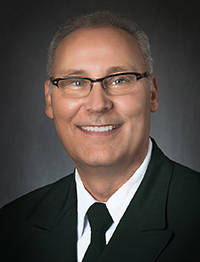
COLLEGE STATION, Texas — David Coatney was named Agency Director of the Texas A&M Engineering Extension Service (TEEX) by the Texas A&M University System Board of Regents on Nov. 15. The appointment was confirmed during the meeting of the Board of Regents in College Station, following a 21-day waiting period. Coatney will assume his position on Jan. 1, 2019.
“The work of Texas A&M Extension Service, which oversees Texas Task Force 1, is the best kept secret of The Texas A&M University System, from workforce training to rescuing thousands from disasters and teaching the rest of the nation how to rescue people,” said Chancellor John Sharp. “I am confident David Coatney will continue to improve upon the agency’s great tradition of public service.”
“I’m excited about working with this great leadership team and employees, and the opportunity to work with an agency like TEEX in making a difference across the state, the nation and the world,” Coatney said.
Most recently, Coatney served as Fire Chief for the Dallas Fire-Rescue Department. Prior to that, he was Fire Chief of the Round Rock Fire Department for five years. He held several positions of progressive leadership over 25 years working for the San Antonio Fire Department, including Chief of Fire Operations, Emergency Management Coordinator, Homeland Security Director and Chief of Training. He currently serves as chair of the State of Texas Governor’s First Responder Council and serves on the FEMA Region 6 Advisory Council and the Texas Division of Emergency Management Executive Advisory Committee.
Coatney earned a bachelor’s degree in Occupational Education with a major in fire science and a master’s degree in Organizational Management from Wayland Baptist University, and he is currently pursuing a master’s degree in Homeland Security from the Naval Postgraduate School. He is a graduate of the Executive Fire Officer Program of the National Fire Academy and the Executive Leaders Program in Homeland Security from the Naval Postgraduate School, and holds numerous professional certifications. In 2017, he received the Leadership Award from the Texas Division of Emergency Management.
About The Texas A&M Engineering Extension Service
The Texas A&M Engineering Extension Service (TEEX) is a state agency that is a member of The Texas A&M University System. It is an internationally recognized leader in the delivery of emergency response, homeland security and workforce training, exercises, technical assistance, and economic development. In 2018, TEEX served nearly 195,000 people from across the United States and 81 countries through hands-on training and technical services.
About The Texas A&M University System
The Texas A&M University System is one of the largest systems of higher education in the nation, with a budget of $4.7 billion. Through a statewide network of 11 universities and seven state agencies, the Texas A&M System educates more than 152,000 students and makes more than 22 million additional educational contacts through service and outreach programs each year. System-wide, research and development expenditures exceeded $972 million in FY 2016 and helped drive the state’s economy.

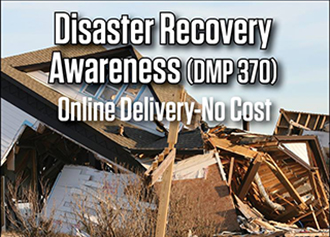
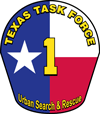 COLLEGE STATION – Tropical Storm Harvey has reduced in wind speed and intensity, with 50 mph sustained winds, but life-threating rainfall is still expected over a large area of the Texas coast. Given the size of the impact area and the continued potential for significant rain and flood damage to a number of Texas counties, several search and rescue teams have begun operations in the region.
COLLEGE STATION – Tropical Storm Harvey has reduced in wind speed and intensity, with 50 mph sustained winds, but life-threating rainfall is still expected over a large area of the Texas coast. Given the size of the impact area and the continued potential for significant rain and flood damage to a number of Texas counties, several search and rescue teams have begun operations in the region.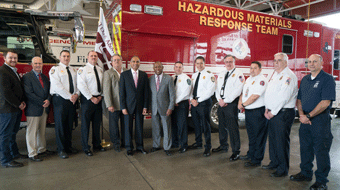 The Texas A&M Engineering Extension Service (TEEX), an internationally recognized leader in emergency response training and firefighting, will administer the training to the fire departments. The donation will underwrite hazardous materials (HazMat) training scholarships for fire departments in Houston, Channelview, Pasadena, La Porte, Sheldon and Mont Belvieu.
The Texas A&M Engineering Extension Service (TEEX), an internationally recognized leader in emergency response training and firefighting, will administer the training to the fire departments. The donation will underwrite hazardous materials (HazMat) training scholarships for fire departments in Houston, Channelview, Pasadena, La Porte, Sheldon and Mont Belvieu. The LyondellBasell donation will provide more than 1,200 hours of instruction in TEEX’s HazMat training program. Fire departments will have the option of attending classes either at the Brayton Fire Training Field in College Station, Texas, or onsite at their fire stations using TEEX’s mobile training units.
The LyondellBasell donation will provide more than 1,200 hours of instruction in TEEX’s HazMat training program. Fire departments will have the option of attending classes either at the Brayton Fire Training Field in College Station, Texas, or onsite at their fire stations using TEEX’s mobile training units.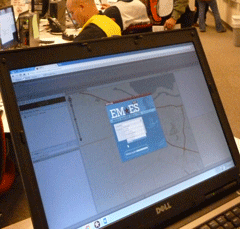 The healthcare personnel and emergency managers from the National Capital Region — who were in Anniston, AL, and College Station, TX — were linked through TEEX’s unique online simulation training tool called the Emergency Management Exercise System (EMES).
The healthcare personnel and emergency managers from the National Capital Region — who were in Anniston, AL, and College Station, TX — were linked through TEEX’s unique online simulation training tool called the Emergency Management Exercise System (EMES).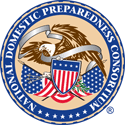 Areas of collaboration included: hospital bed space, water contamination, HazMat resources, public health, field command operations and public information. Following the exercise, two representatives from the National Capital Region (one at TEEX and one at CDP) shared lessons learned through a live video teleconference.
Areas of collaboration included: hospital bed space, water contamination, HazMat resources, public health, field command operations and public information. Following the exercise, two representatives from the National Capital Region (one at TEEX and one at CDP) shared lessons learned through a live video teleconference.